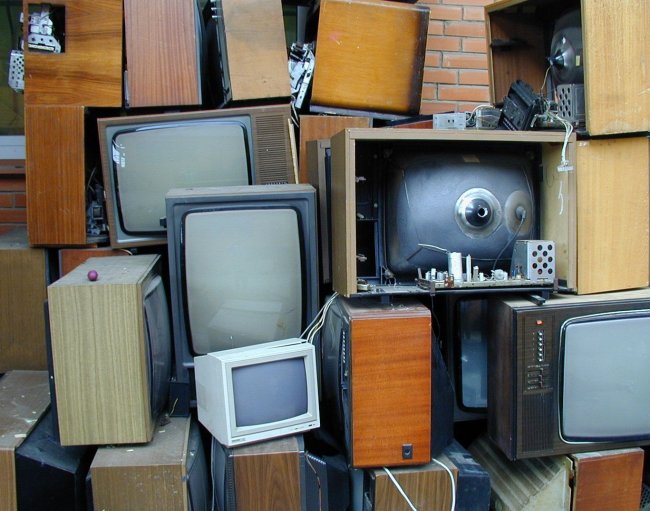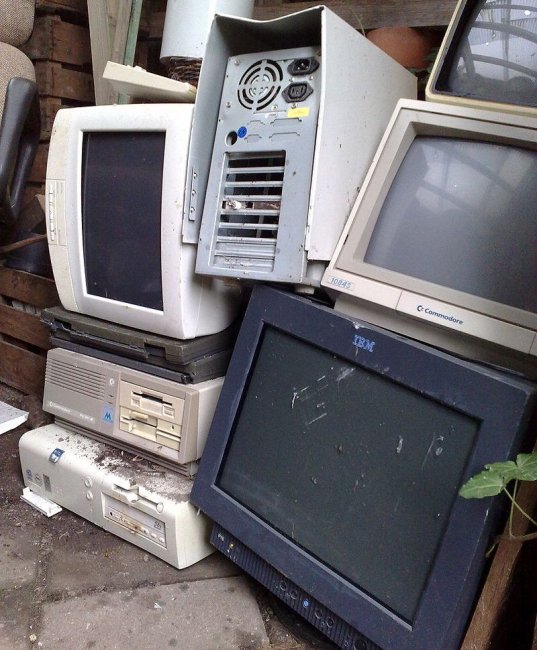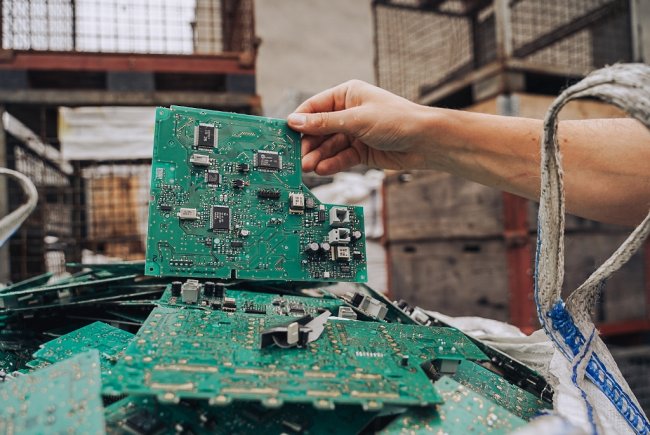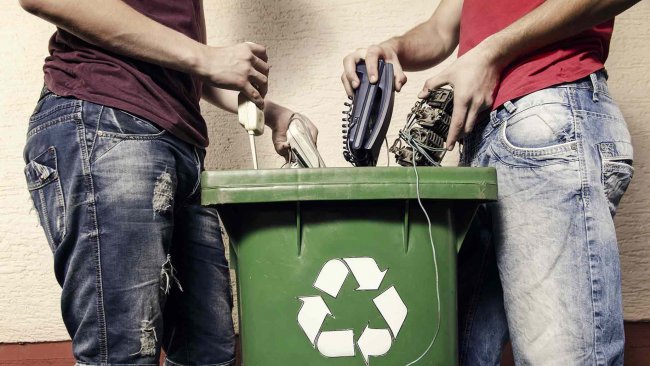Why e-waste is a problem
Electronic waste ("Electronic scrap", "Waste electrical and electronic equipment", WEEE) is waste consisting of obsolete or unnecessary electrical and electronic equipment. E-waste includes large household appliances, household electrical appliances, computer equipment, telecommunications, audiovisual, lighting and medical equipment, electronic toys for children, electrical and electronic tools, automata, sensors, measuring instruments, etc.
Both obsolete electrical and electronic equipment are of concern because many of their components are toxic and non-biodegradable, therefore e-waste is separated from household and mixed waste and there are different rules for collection, recovery and disposal.
Electrical waste cannot be disposed of with other waste, as it contains many harmful and toxic substances. The treatment and recovery of e-waste is governed by national rules and regulations.
Due to the complexity of the pollution problem and the significant increase in the production, consumption and subsequent disposal of electronics, it has become necessary to develop specific laws that are currently in force in various parts of the world.
According to the UN's Global E-Waste Monitor 2020, a record 53.6 million metric tons (Mt) of e-waste was generated globally in 2019, an increase of 21% in just five years. The new report also predicts that global e-waste will reach 74 million tons by 2030, nearly doubling e-waste in just 16 years.
This makes e-waste the fastest growing household waste stream in the world, driven primarily by the greater consumption of electrical and electronic equipment, shorter life cycles and fewer repair options.
Old computers are a typical example of e-waste
Only 17.4% of e-waste for 2019 was collected and recycled. This means that gold, silver, copper, platinum and other expensive recovery materials, conservatively estimated at $57 billion, which exceeds the gross domestic product of most countries, have been buried or burned. Basically, instead of collecting them for processing and reuse.
Asia generated the largest amount of e-waste in 2019 at around 24.9 million tonnes, followed by the Americas (13.1 million tonnes) and Europe (12 million tonnes) and Africa and Oceania, according to the report. 2.9 million tons and 0.7 million tons, respectively.
There are large landfills where Western countries dump their e-waste.The largest landfill of this type is located in China, namely in the city of Guiyu, information about which has been confirmed by the Chinese government itself. Approximately 150,000 people work in the city to recycle waste, which mainly comes from the US, Canada, Japan and South Korea.
The UN estimates that 80% of technological waste generated worldwide is exported to third world countries where there are no regulations.
Another giant e-waste dump located in Ghana, Africa, employs about 30,000 people. This dump brings the country between $105 million and $268 million annually. Ghana imports about 215,000 tons of e-waste annually.
Contamination samples taken from soils in the area of this landfill show very high levels of heavy metals such as lead, copper or mercury.
Another danger is the very common practice of burning appliances and equipment to remove plastics and to gain faster access to the metals they contain, such as copper or aluminum. The resulting smoke is highly toxic.
E-waste contains many harmful and toxic substances that, after leaving a damaged equipment: refrigerator, washing machine, computer, battery, fluorescent lamp or other electronic device, easily penetrate into the soil, groundwater and air. These harmful substances cause environmental pollution, creating a risk to human and animal health.
- Mercury is found in fluorescent lights. It is a very harmful metal, which when ingested causes kidney damage, impairs vision, hearing, speech and movement coordination, deforms bones and can cause neoplasms.
- Lead is used in electronics as a component of solders and glass for electron-beam tubes.It has toxic and carcinogenic properties. When it is absorbed into the body, it first enters the blood in the liver, lungs, heart and kidneys, then the metal accumulates in the skin and muscles. Eventually, it accumulates in the bone tissue and destroys the bone marrow.
- Bromine compounds are used in computers. Penetrating into the environment, they cause diseases of the reproductive system and neurological problems in humans and animals.
- Barium is a metallic element that is used in candles, fluorescent lamps, and ballasts. In its pure form, it is extremely unstable; on contact with air forms poisonous oxides. Short-term exposure to barium can cause brain swelling, muscle weakness, and damage to the heart, liver, and spleen. Animal studies have shown increased blood pressure and changes in the heart.
- Chromium is used to coat metal parts to protect them from corrosion. The element is also contained in the phosphor of cathode ray tubes. Chromium poisoning is manifested by cardiovascular and respiratory diseases, skin diseases and allergies. Most chromium compounds irritate the eyes, skin and mucous membranes. Chronic exposure to chromium compounds can cause permanent eye damage if not treated properly. Chromium can also damage DNA.
- Cadmium is found in batteries in electrical appliances. It impairs renal function, reproductive function, causes hypertension, causes neoplastic changes, and disrupts calcium metabolism, causing skeletal deformity.
- When nickel enters the body in high concentration, it damages the mucous membranes, reduces the levels of magnesium and zinc in the liver, causes changes in the bone marrow and can contribute to neoplastic changes.
- PCBs (polychlorinated biphenyls) perform cooling, lubricating and insulating functions in electronic devices. Once in the body, it remains in adipose tissue, causing, among other things, liver damage, abnormalities of the reproductive system, weakened immunity, neurological and hormonal disorders.
- Polyvinyl chloride (PVC) is the most commonly used plastic in electronics and household appliances, in household utensils, pipes, etc. PVC is dangerous because it contains up to 56% chlorine, which when burned produces a large amount of gaseous hydrogen chloride, which in combination with water forms hydrochloric acid, this acid is dangerous because it causes respiratory problems when inhaled.
- Brominated Flame Retardants (BFRs) — The 3 main types of flame retardants used in electronic devices are polybrominated biphenyl (PBB), polybrominated diphenyl ether (PBDE), and tetrabromobisphenol-A (TBBPA). Flame retardants make materials, especially plastics and textiles, more fire resistant. They are in dust form and in the air as a result of migration and evaporation from the plastic. Burning halogenated materials and printed circuit boards, even at low temperatures, produces toxic fumes, including dioxins, which can cause serious hormonal imbalance. Major electronics manufacturers have already begun phasing out brominated flame retardants due to their toxicity.
- R-12, or Freon, is a synthetic gas found in air conditioners and refrigerators where it serves as a cooling function. This is particularly harmful to the ozone layer. As of 1998, it cannot be used in electrical devices, but is still found in older types of devices.
- Asbestos is used in electrical and electronic devices, also for its insulating properties. However, it is the cause of many serious diseases such as asbestosis and lung cancer.
Some possible solutions include:
- Discard components that cannot be repaired. There are companies that collect and recycle these devices free of charge for owners of unused equipment.
- Encouraging the reduction of the use of hazardous substances in certain electronic products sold in each country.
- Extending the responsibility of the manufacturer, after being used by consumers, the manufacturers themselves accept the product, this encourages them to improve the design so that it can be recycled and used more easily.
- In some countries, the entire life cycle of a product is taken into account. People who do not behave responsibly after use are subject to a fine.
- Some products even have a board designed to eliminate maximum exposure to these materials. The companies themselves should have a system to recycle their products so that the whole planet can benefit.
"Electronic scrap" or WEEE (waste electrical and electronic equipment) can generally be considered hazardous waste. In most parts of the world, this waste must be transported by authorized hazardous waste haulers and never to conventional landfills.
Transportation or direct delivery to unauthorized landfills, as well as acceptance of this waste without legal documents, is severely punished with heavy fines.
Electronics recycling is considered an environmentally friendly process because it prevents hazardous waste, including heavy metals and carcinogens, from entering the atmosphere, landfills or waterways.




